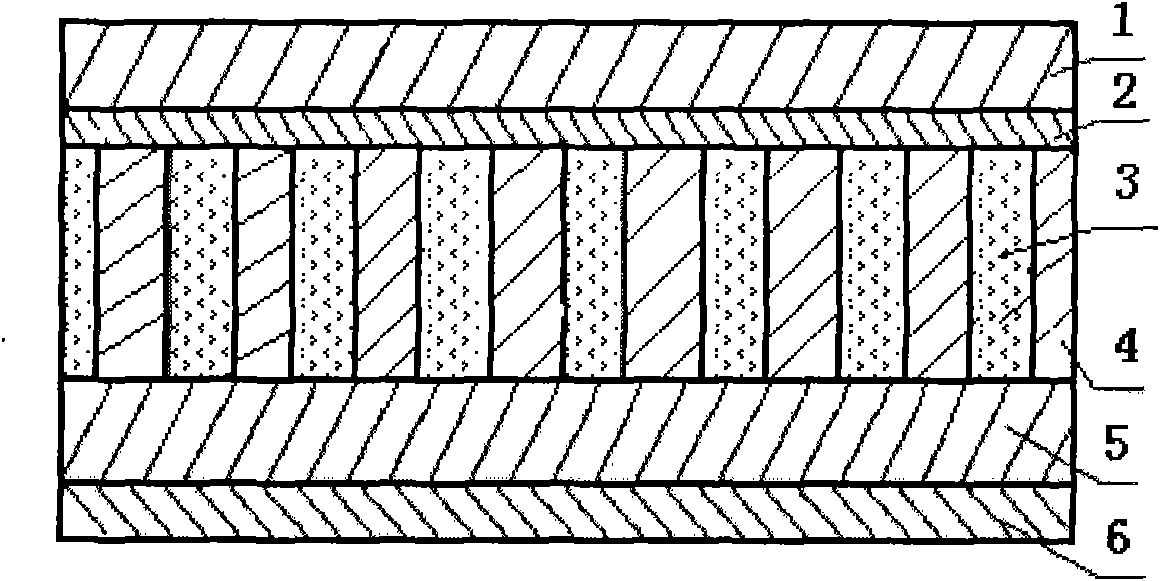Solar cell with zinc oxide based organic/inorganic hybrid nanostructure
A technology of solar cells and nanostructures, applied in the field of solar cells, can solve the problems of high forbidden band width, etc., achieve the effect of high breaking voltage output and improve photoelectric conversion efficiency
- Summary
- Abstract
- Description
- Claims
- Application Information
AI Technical Summary
Problems solved by technology
Method used
Image
Examples
Embodiment
[0021] See attached figure 1 , which is a schematic cross-sectional view of the organic / inorganic nanocomposite solar cell provided in this example. Depend on figure 1 It can be seen that it includes the upper metal electrode 1, the lower metal electrode 6, the transparent conductive electrode 2 and the working area of the solar cell. The transparent conductive electrode is installed on the top of the solar cell working area, and then contacts with the upper layer metal electrode, and the lower layer metal electrode is installed at the bottom of the solar cell working area.
[0022] The transparent conductive electrode is made of doped n-type conductive ZnO. The ZnO layer is a transparent electrode material that has been developing rapidly in recent years. It can be deposited at low temperature by electron beam evaporation or vacuum sputtering to achieve packaging, charge collection and protection of organic materials. The purpose of the filler.
[0023] The working area ...
PUM
 Login to View More
Login to View More Abstract
Description
Claims
Application Information
 Login to View More
Login to View More - R&D
- Intellectual Property
- Life Sciences
- Materials
- Tech Scout
- Unparalleled Data Quality
- Higher Quality Content
- 60% Fewer Hallucinations
Browse by: Latest US Patents, China's latest patents, Technical Efficacy Thesaurus, Application Domain, Technology Topic, Popular Technical Reports.
© 2025 PatSnap. All rights reserved.Legal|Privacy policy|Modern Slavery Act Transparency Statement|Sitemap|About US| Contact US: help@patsnap.com

